

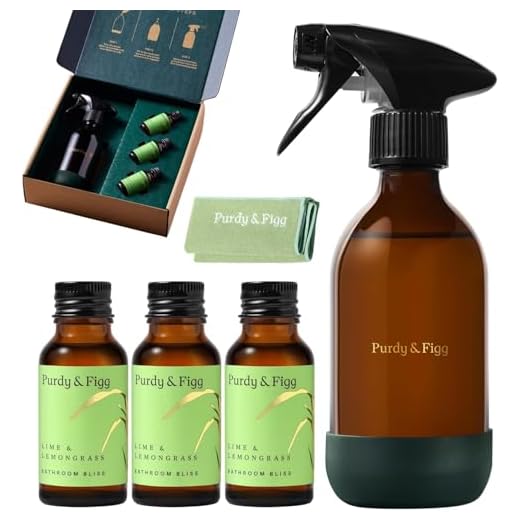


Having clean and sparkling taps is not just aesthetically pleasing, it is also important for maintaining good hygiene in your home. However, over time, taps can become covered in an unsightly white crust known as limescale buildup. This buildup is caused by mineral deposits that are present in hard water.
Removing limescale buildup from taps can be a challenging task, but with the right techniques and products, it can be done effectively. In this article, we will share expert tips on how to remove limescale buildup from taps and restore their original shine.
One of the most effective ways to remove limescale buildup from taps is by using vinegar. Vinegar is a natural acid that helps dissolve mineral deposits. To use vinegar for removing limescale, soak a cloth or sponge in vinegar and wrap it around the affected area of the tap. Leave it on for about an hour, then scrub the tap with a soft brush or cloth. Rinse thoroughly with water and dry the tap with a clean towel. This method should remove most of the limescale and restore the taps’ shine.
Another effective method for removing limescale buildup is using lemon juice. Lemon juice contains citric acid, which is also effective at dissolving mineral deposits. To use lemon juice, squeeze the juice from a lemon into a bowl and dip a cloth or sponge into it. Apply the lemon juice to the affected areas of the tap and let it sit for about 30 minutes. Scrub the tap with a soft brush or cloth, then rinse thoroughly with water and dry with a clean towel.
For more stubborn limescale buildup, you may need to use a descaling product specifically designed for taps. These products contain stronger acids that can effectively dissolve tough limescale buildup. Follow the instructions on the product carefully, as some may require you to dilute the descaling solution before use. After applying the descaling product, scrub the tap with a soft brush or cloth, then rinse thoroughly and dry with a clean towel.
Understanding Limescale Buildup
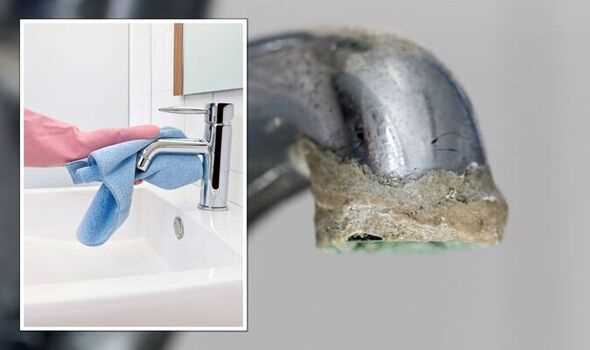
Limescale buildup is a common problem that occurs in taps and other water fixtures. It is a white, chalky substance that forms when hard water evaporates. Hard water contains high levels of minerals such as calcium and magnesium, which are left behind as the water evaporates.
Limescale deposits can be unsightly and can also affect the performance of your taps, reducing water flow and causing blockages. Understanding how limescale buildup occurs can help you prevent and remove it effectively.
Causes of Limescale Buildup
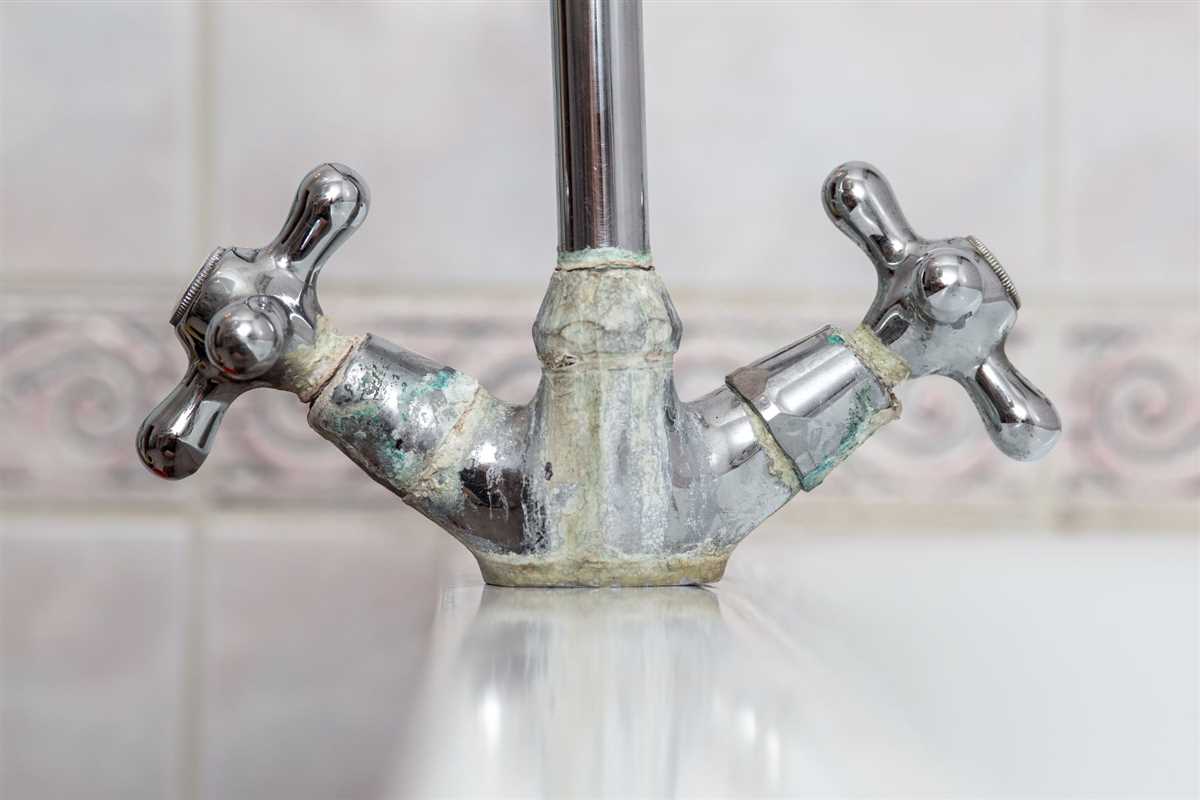
Limescale buildup can occur due to a variety of reasons:
- Hard Water: Hard water is the main cause of limescale formation. If your area has high mineral content in the water, you are more likely to experience limescale buildup.
- Temperature: Higher temperatures can accelerate limescale formation. Hot water contains more dissolved minerals which can precipitate and form limescale.
- Poor Maintenance: Lack of regular cleaning or descaling of taps can contribute to the buildup of limescale over time.
Effects of Limescale Buildup
Limescale buildup can have several negative effects:
- Reduced Water Flow: Limescale deposits can restrict the flow of water through your taps, resulting in reduced water pressure.
- Unclean Appearance: Limescale buildup can make your taps look dirty and unsightly.
- Damage to Appliances: Limescale can accumulate inside appliances, such as kettles or dishwashers, and affect their performance and lifespan.
Preventing and Removing Limescale
To prevent limescale buildup, you can:
- Install a water softener or use a water descaler to reduce the mineral content in your water.
- Wipe down taps regularly to remove any water residue and prevent limescale formation.
- Use vinegar or lemon juice to remove light limescale deposits.
If limescale buildup has already occurred, you can remove it by:
- Soaking the affected area in vinegar or a descaling solution.
- Scrubbing the area with a soft brush or sponge to remove the deposits.
- Rinsing thoroughly with water to remove any remaining residue.
Regular maintenance and cleaning can help prevent and remove limescale buildup, ensuring the longevity and functionality of your taps.
What causes limescale in taps and why it should be removed?
Limescale is a common problem that occurs when hard water is left to evaporate on surfaces, such as taps. Hard water contains high levels of dissolved minerals, particularly calcium and magnesium carbonate. When the water evaporates, these minerals are left behind, forming a crusty white or yellowish residue known as limescale.
Causes of limescale in taps:
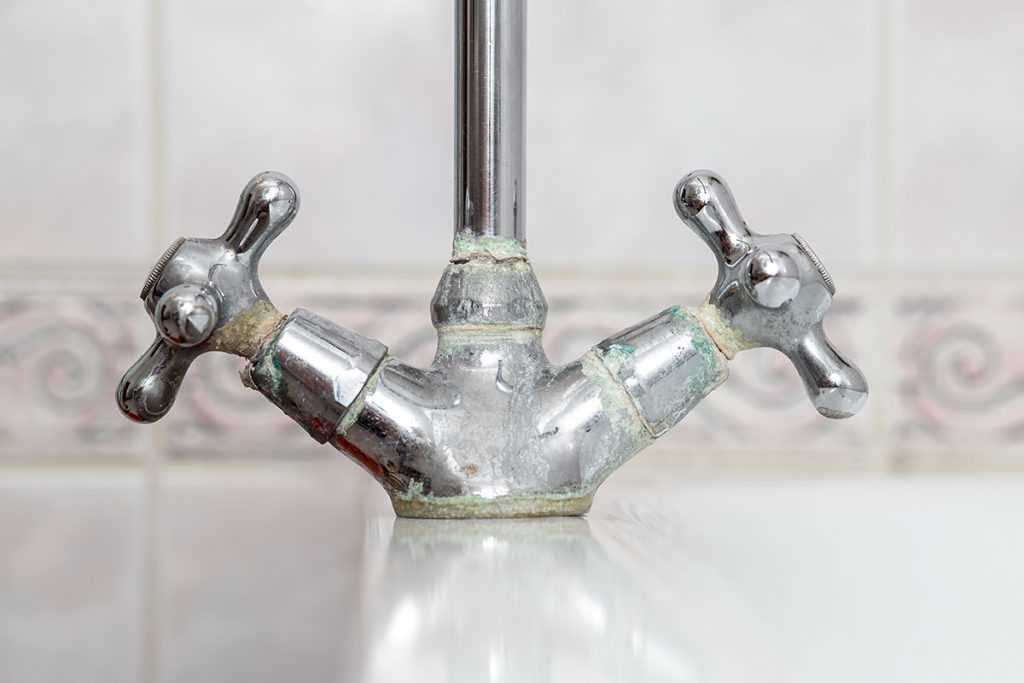
- Hard water: Areas with high concentrations of minerals in the water supply are more prone to limescale buildup.
- Heat: When water is heated, the minerals in it become even more concentrated, increasing the likelihood of limescale formation.
- Poor maintenance: Neglecting regular cleaning and maintenance of taps can lead to the accumulation of limescale over time.
Why limescale should be removed:
Limescale buildup on taps not only affects their appearance but also has practical implications:
- Reduced water flow: The crusty limescale can block the openings of the taps, reducing the water flow and affecting their efficiency.
- Untreated limescale can spread: If left unattended, limescale can continue to accumulate and spread, affecting other areas of the tap or nearby fixtures.
- Affected durability: Limescale can corrode and damage the internal components of taps, leading to leaks and costly repairs.
- Aesthetic appeal: Limescale buildup can make taps look dull and unappealing, affecting the overall appearance of a bathroom or kitchen.
- Hygiene concerns: Limescale can harbor bacteria and other microorganisms, potentially compromising the hygiene of the tap and the water it dispenses.
Removing limescale from taps is therefore essential to maintain their functionality, durability, and aesthetic appeal.
Preventing Limescale Formation
Limescale buildup can be a common issue in households with hard water. Fortunately, there are several preventative measures you can take to minimize limescale formation
1. Use a Water Softener:
Installing a water softener can help reduce the mineral content in hard water, making it less likely to leave limescale deposits on your taps. Water softeners work by replacing calcium and magnesium ions with sodium ions.
2. Clean Regularly:
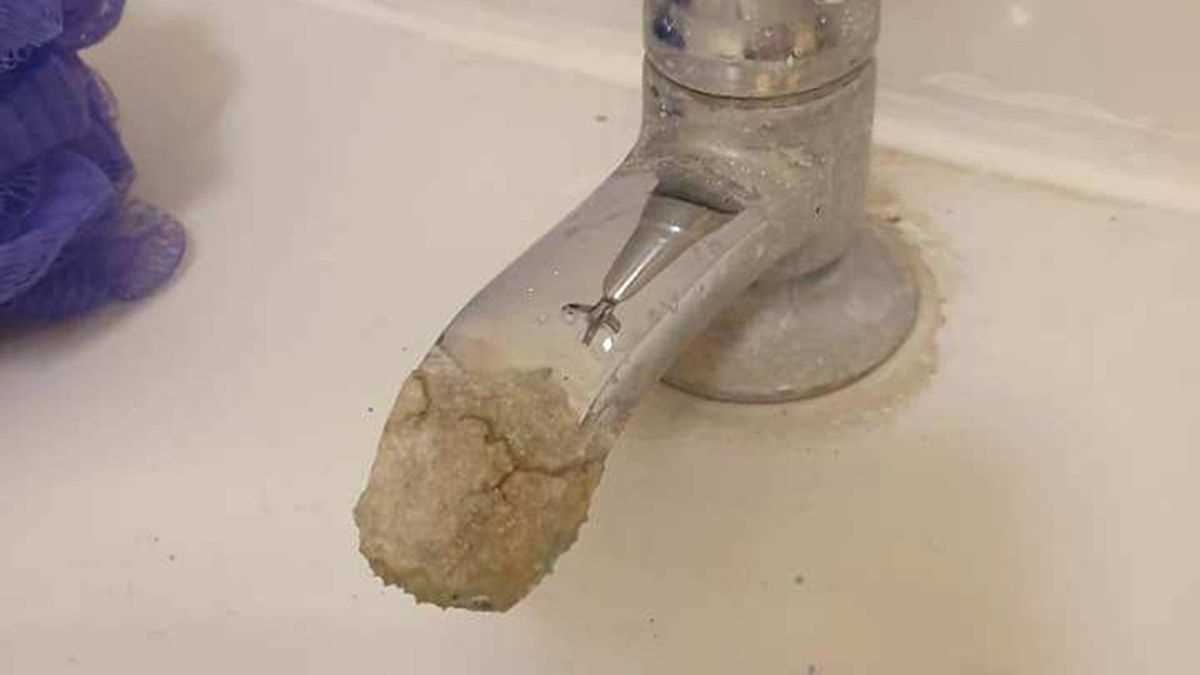
To prevent the buildup of limescale, it is important to clean your taps regularly. Use a mild cleaning solution that is specifically designed for removing limescale. Be sure to follow the manufacturer’s instructions and rinse the taps thoroughly after cleaning.
3. Wipe Dry:
After using your taps, wipe them dry with a soft cloth or towel. This helps to remove any water droplets that can contribute to limescale formation. Regular drying can help prevent the buildup of limescale and keep your taps looking spotless.
4. Use Vinegar:
Vinegar is a natural cleaning agent that can help dissolve limescale deposits. Fill a spray bottle with equal parts vinegar and water, and spray it onto the affected areas. Allow it to sit for a few minutes, then scrub with a soft brush or cloth. Rinse thoroughly after cleaning.
5. Install a Water Filter:
A water filter can help remove impurities from the water supply, including minerals that contribute to limescale formation. There are various types of water filters available, such as activated carbon filters and reverse osmosis systems. Choose a filter that is suitable for your specific needs.
6. Use Citric Acid:
Citric acid is another natural remedy for removing limescale buildup. Mix a solution of citric acid and water, then apply it to the affected areas. Allow it to sit for a while, then scrub and rinse thoroughly. Citric acid is safe to use and can be an effective way to prevent limescale formation.
7. Consider a Descaler:
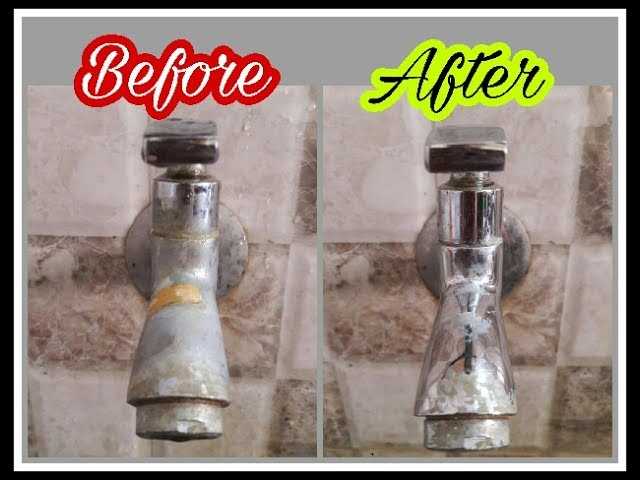
If limescale buildup is a persistent problem in your household, you may want to invest in a descaler. These devices are specifically designed to remove limescale deposits from taps and other fixtures. Follow the manufacturer’s instructions to effectively use the descaler.
8. Regularly Inspect and Maintain:
Regularly inspect your taps for any signs of limescale buildup. If you notice any deposits starting to form, take immediate action to remove them before they become more difficult to clean. Additionally, make sure to maintain your water softener or filter system according to the manufacturer’s guidelines.
By following these preventive measures, you can significantly reduce limescale formation on your taps and keep them looking clean and functioning properly. Remember to consult professionals for advice on specific products or methods that are best suited for your situation.
Tips for preventing limescale buildup in taps
Limescale buildup can be prevented with regular maintenance and simple household items. Here are some tips to help you prevent limescale buildup in your taps:
- Regular cleaning: Clean your taps regularly with a mild detergent or vinegar solution. This will help remove any existing limescale and prevent new buildup.
- Use a water softener: If you live in an area with hard water, consider installing a water softener. This will help reduce the mineral content in the water and prevent limescale formation.
- Avoid abrasive cleaners: Avoid using abrasive cleaners or scrubbing pads on your taps, as these can damage the surface and make them more prone to limescale buildup.
- Use a descaler: Periodically use a descaler specifically designed for taps to remove any stubborn limescale buildup. Follow the manufacturer’s instructions for best results.
- Wipe dry after use: After using your taps, wipe them dry with a clean cloth to prevent water spots and limescale buildup.
- Remove aerators and clean: Remove the aerators from your taps and clean them regularly. Aerators can trap mineral deposits, leading to limescale buildup.
- Check for leaks: Regularly check your taps for leaks and fix them promptly. Dripping water can contribute to limescale formation.
By following these simple tips, you can keep your taps free from limescale buildup and ensure their optimal functioning.
Natural Home Remedies
Lemon Juice
One of the most effective natural remedies for removing limescale buildup from taps is lemon juice. Lemon juice contains citric acid, which helps to dissolve the mineral deposits. Simply cut a lemon in half and rub it directly onto the limescale. Let it sit for a few minutes, then rinse with warm water. Repeat as necessary until the limescale is completely gone.
Vinegar
Vinegar is another powerful natural remedy for removing limescale. The acetic acid in vinegar helps to dissolve the mineral deposits. Fill a spray bottle with equal parts vinegar and water, and spray the solution onto the limescale. Let it sit for a few minutes, then scrub with a soft brush or cloth. Rinse thoroughly with warm water. For stubborn limescale, you can heat the vinegar before applying it.
Baking Soda
Baking soda is a gentle abrasive that can help remove limescale buildup. Make a paste by mixing baking soda with a small amount of water. Apply the paste to the affected areas and let it sit for a few minutes. Scrub with a soft brush or cloth, then rinse with warm water. Repeat if necessary.
Salt
Salt is another effective natural remedy for removing limescale. Mix salt with a little bit of vinegar or lemon juice to create a paste. Apply the paste to the limescale and let it sit for a few minutes. Scrub with a brush or cloth, then rinse with warm water. Salt can also be used on its own by sprinkling it directly onto the limescale and scrubbing.
Borax
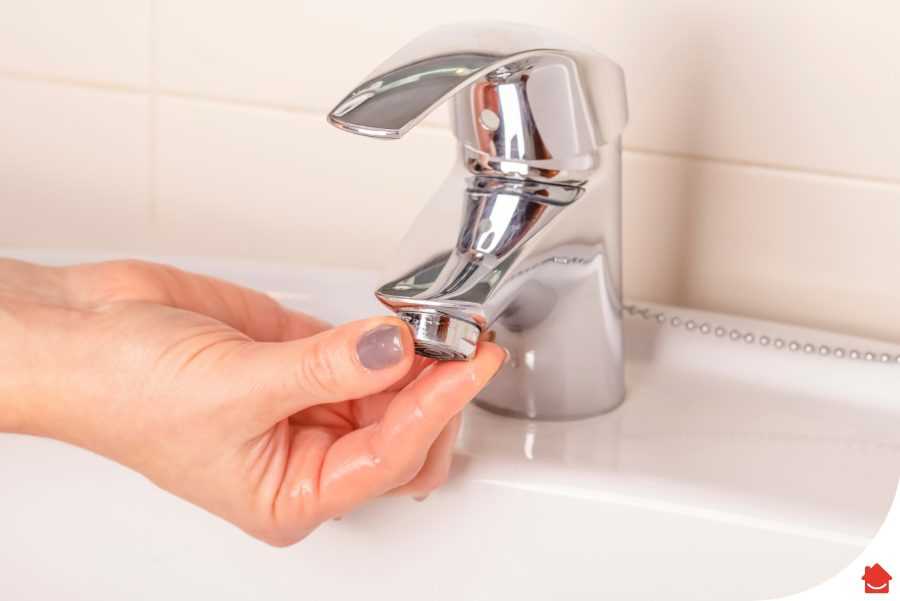
Borax is a natural cleaning agent that can help remove limescale buildup. Mix borax with a small amount of water to create a paste. Apply the paste to the limescale and let it sit for a few minutes. Scrub with a brush or cloth, then rinse with warm water. Borax is a stronger solution, so it is important to wear gloves and rinse thoroughly after use.
Conclusion
These natural home remedies can be used to effectively remove limescale buildup from taps. They are affordable, eco-friendly, and easy to use. Try these remedies before resorting to harsh chemicals, and you will be amazed at the results.
Effective natural remedies for removing limescale from taps
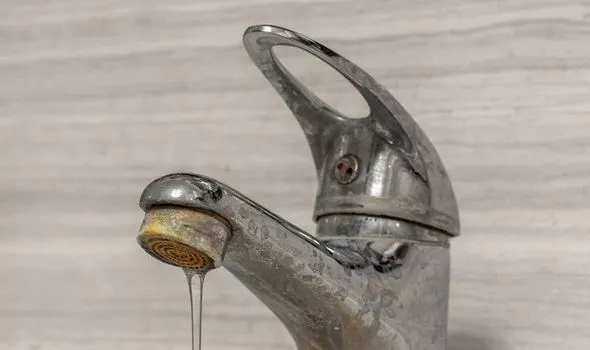
Vinegar and water solution

Mix equal parts white vinegar and water in a bowl or spray bottle. Soak a cloth or sponge in the solution and then apply it to the limescale buildup on the taps. Let it sit for a few minutes and then scrub gently with a soft brush or scrubber. Rinse thoroughly with water.
Lemon juice
Cut a lemon in half and rub the cut side on the limescale deposits. The acidity of the lemon juice helps dissolve the limescale. Use a soft cloth or sponge to scrub the area. Rinse with water afterwards.
Baking soda paste
Mix baking soda with a small amount of water to create a paste. Apply the paste to the limescale deposits on the taps and let it sit for a few minutes. Scrub gently with a soft brush or scrubber. Rinse thoroughly with water.
Commercial descaler
If the limescale buildup on your taps is stubborn and hard to remove with natural remedies, you can try using a commercial descaler. Follow the instructions on the product label for best results. Make sure to rinse the taps thoroughly after using a descaler.
- Regular maintenance: To prevent limescale buildup on your taps, wipe them down regularly with a soft cloth or sponge to remove any water residue.
- Preventive measures: Consider using a water softening system or installing a water filter to reduce limescale buildup in your plumbing system.
| Method | Advantages | Disadvantages |
|---|---|---|
| Vinegar and water solution | Effective, natural, affordable | May require some scrubbing |
| Lemon juice | Natural, refreshing scent | May need multiple applications for stubborn limescale |
| Baking soda paste | Gentle on surfaces, good for light limescale | Requires scrubbing, may leave residue if not rinsed properly |
| Commercial descaler | Strong and effective for tough limescale | May contain harsh chemicals, more expensive than natural remedies |
Chemical Cleaners
To remove limescale buildup from taps, you can also use chemical cleaners that are specially formulated for this purpose. These cleaners are usually available in the form of sprays or gels and are designed to dissolve and remove limescale effectively.
Important Tips:
- When using chemical cleaners, always read and follow the instructions provided by the manufacturer.
- Make sure to wear gloves and protective eyewear to protect your skin and eyes from any potential irritants.
- Ensure the area is well ventilated. Open any windows or doors to prevent any buildup of fumes.
Steps to Use Chemical Cleaners:
- Apply the chemical cleaner directly onto the limescale buildup on the tap.
- Allow the cleaner to sit for the recommended amount of time specified in the instructions.
- Gently scrub the treated area using a soft brush or sponge.
- Rinse the tap thoroughly with water to remove any residue.
- Wipe the tap dry with a clean cloth.
Chemical cleaners can be an effective solution for removing limescale buildup from taps. However, it is important to note that some chemical cleaners may contain harsh ingredients that can damage certain types of taps or fixtures. Always check the compatibility of the cleaner with your specific tap material before use.
FAQ
What is limescale and how does it form on taps?
Limescale is a hard, chalky deposit that forms on taps and other surfaces due to the buildup of minerals in water. It is a common problem in areas with hard water, which contains high levels of calcium and magnesium ions. When the water evaporates, these minerals are left behind and form limescale.
What are some effective ways to remove limescale buildup from taps?
There are several effective ways to remove limescale buildup from taps. One method is to use a solution of equal parts water and white vinegar. Soak a cloth or sponge in the solution and scrub the affected area. You can also wrap a cloth soaked in vinegar around the tap and leave it overnight for stubborn limescale. Another option is to use a descaling product specifically designed to remove limescale.
Can limescale buildup on taps cause any damage?
Yes, limescale buildup on taps can cause damage over time. The minerals in limescale can corrode the metal surface of the tap, leading to pitting or staining. It can also cause the tap to become clogged or reduce water flow. Regular maintenance and removal of limescale can help prevent any potential damage.
Are there any DIY methods to prevent limescale buildup on taps?
Yes, there are some DIY methods to prevent limescale buildup on taps. One method is to install a water softener or use a water conditioner to reduce the mineral content in the water. Another option is to wipe the taps dry after each use to prevent the minerals from drying and forming limescale. Regularly cleaning the taps with a mild detergent can also help prevent limescale buildup.
Can limescale buildup affect the taste or quality of water from taps?
Limescale buildup on taps is unlikely to affect the taste or quality of water. However, if there is a heavy buildup of limescale on the aerator or filter of the tap, it can affect the flow and pressure of water, potentially impacting the taste. It is important to regularly clean and maintain the taps to ensure optimal water quality.
What are some signs that indicate a buildup of limescale on taps?
Some signs that indicate a buildup of limescale on taps include a white, chalky residue on the surface of the tap, reduced water flow or pressure, and difficulty in turning the tap on or off smoothly. If you notice any of these signs, it is recommended to clean and remove the limescale buildup as soon as possible.














